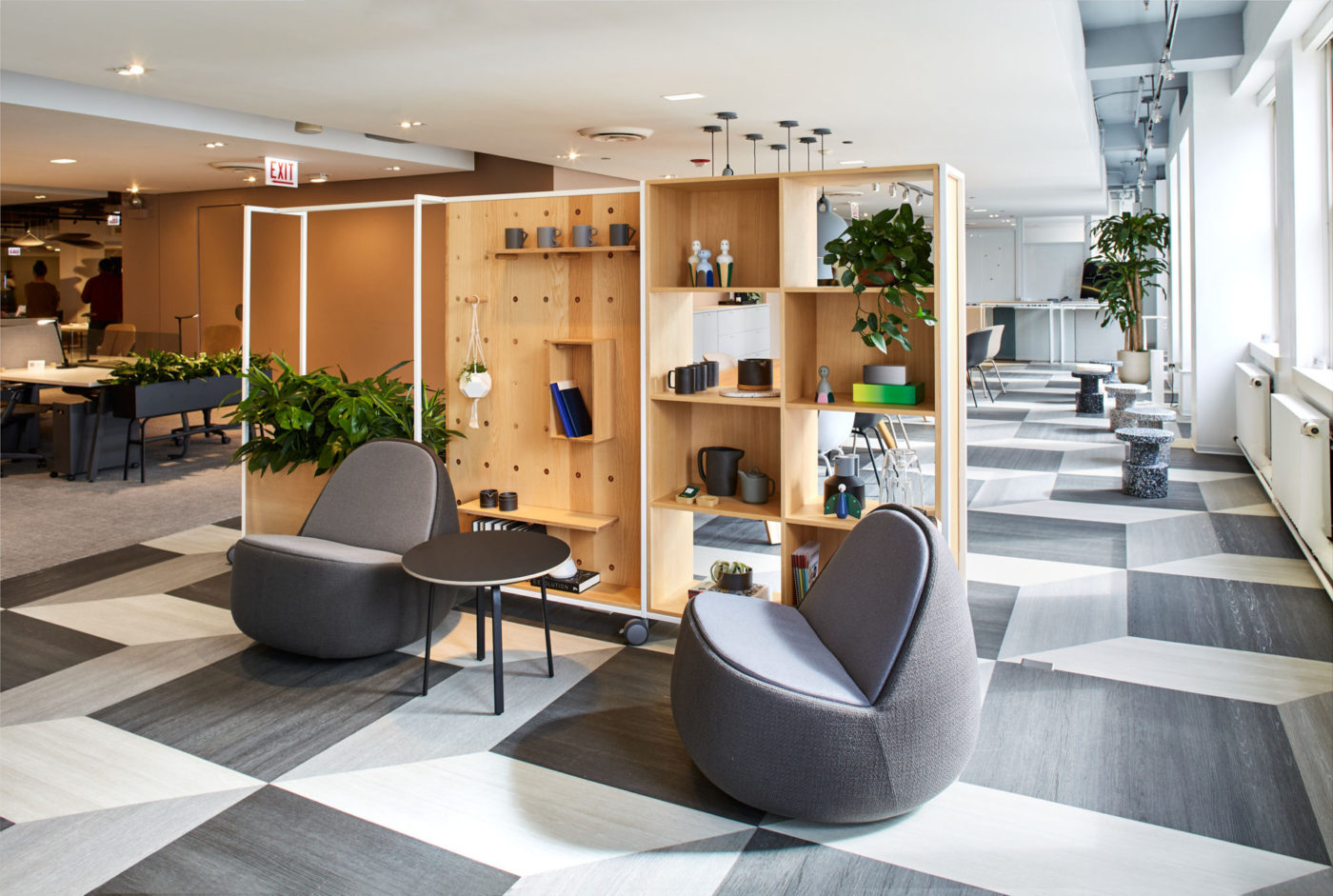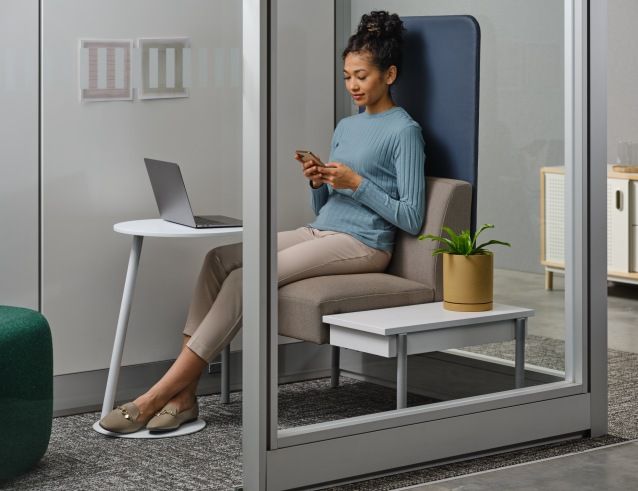Inclusive Design is Good Design
Inclusive Design considerations can foster a sense of welcomeness and help support a diverse workforce. There are various ways to design for inclusivity through the following pillars: physical diversity, neurodiversity, and trauma informed design.
The assumption may be that these considerations only benefit a specific demographic. With this assumption, one could easily ruminate on what the point is if all this work only benefits a few.
However, Inclusive Design considerations have the potential to benefit all. With thoughtful integration of design principles throughout the workplace, Inclusive Design can foster a sense of well-being whether individuals require adaptations, or they are simply trying to find productive workspaces.
The Curb-Cut Effect
Inclusive Design is good design. This belief is well-explained in a concept called the “curb-cut effect.” Sidewalk curbs create a step transition between the street and the pedestrian path, which may be difficult for individuals with physical disabilities to navigate, such as individuals in wheelchairs.
Therefore, curb-cut, or ramp transitions from sidewalks to the street, were introduced with the primary intention of providing wheelchair users access to sidewalks. However, it was quickly understood that the benefits of curb-cuts reach well beyond the specific intended population. Research has suggested that 90% of pedestrians prefer using curb-cuts over non-curb-cuts (1). Curb-cuts are helpful for wheelchair users, individuals pushing strollers, and more. The curb-cut effect is an excellent example of how considerations for Inclusive Design often have wide-reaching benefits.
How the Curb-Cut Effect Applies to the Office
Rocking
When designing for a neurodiverse population, furniture considerations, as well as inclusion of opportunities that support rocking and movement, can help individuals better focus and process information. While we have long understood the benefits of movement for all employees, we have been working to create opportunities for employees to change posture and avoid static positions in the office.
Rocking movements have been recommended in the Trauma Informed Design field as an opportunity to reregulate from a freeze response, making rocking an excellent opportunity to promote movement and well-being for all within the workplace.

Wellness Room
Wellness rooms that offer employees visual privacy, acoustic dampening, comfortable furniture, and clear floor space have potential benefits to a neurodiverse population by providing space with reduced sensory input. These benefits are echoed through the lens of Trauma Informed Design, where offering opportunities for privacy and space to move or lay down have been shown to aid individuals experiencing dysregulation. When the use of wellness rooms is embraced and encouraged, these spaces can benefit all, offering opportunities for private moments where individuals can take a break from the stress of the office.
From ergonomic furniture that supports a physically diverse population and minimizes distractions, to acoustic planning that is conscious of those who are hypersensitive and prefer to focus in quiet spaces, examples of the curb-cut effect can be found all throughout the office.

Conclusion
There will be times when individuals require considerations that are specific to their needs, and these individual requirements should not be undervalued. By understanding the diverse needs in the workplace and responding with empathy, we stand to elevate the design of the space for all. As we work to integrate inclusive design principles more fully into our work environments, we will continue to understand the far-reaching benefits and how Inclusive Design is good design.
